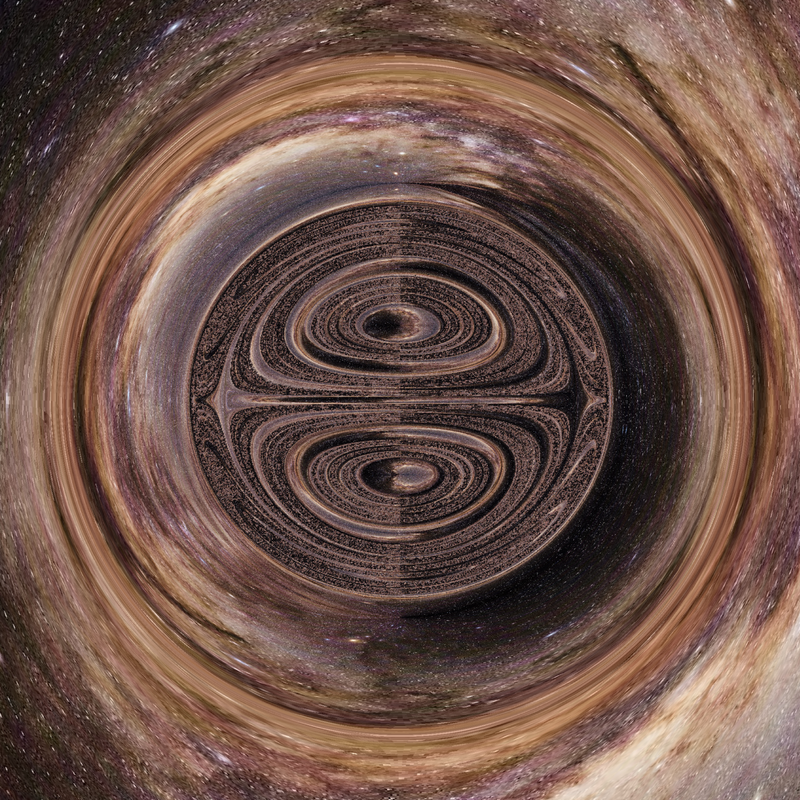A Black Hole Star Could Be the Trippiest Object in Space
In order: space, space with a black hole in it, space with a theorized topological soliton.
A team of physicists mathematically built an exotic object that they believe could look like a black hole to Earth-based observers but is actually a star.
The star is a topological soliton: a smooth, stable, albeit theoretical object. (Skyrmions are another type of topological soliton.) In this case, the vexingly complicated mathematics undergirding the hypothetical object show that it would distort space like a black hole, an object whose gravitational field is so intense that not even light can escape. But unlike a black hole, the team’s calculations suggest, the soliton releases scattered light that could actually be visible.
Read more
These Winning Close-Up Photos Show Life That's Often Overlooked
Remembering Enterprise: The Test Shuttle That Never Flew to Space
“They correspond to gravitational objects that are not produced by ordinary matter but by pure deformations of spacetime itself,” said Pierre Heidmann, a physicist at Johns Hopkins University and the study’s lead author, in an email to Gizmodo. “They distort the cover sheet of spacetime without adding matter, simply using the degrees of freedom of spacetime itself.”
Heidmann said that the topological soliton is a “gravitational solution” to theories of gravity that come from string theory, which attempts to wed general relativity with quantum mechanics using one-dimensional stringlike entities that correspond to known particles. The team’s research paper is accepted to be published in Physical Review D.
“Our work has been to develop novel idealized objects from string theory that can look like black holes but fundamentally are not,” said study co-author Ibrahima Bah, a physicist at Johns Hopkins and lead author of a 2022 paper describing the soliton, in an email to Gizmodo. “This is important because it allows us to better understand how to look for and test for new objects beyond black holes that could come from a complete theory of gravity.”
Though string theory attempts to describe the nature of the universe on the smallest scales, it obviously has bearing on the largest of objects. (Consider neutron stars, superdense objects that some physicists suspect may be factories for axions, a prime candidate to explain dark matter.) The massive universe involves intense physics that have implications for the subatomic universe, and vice versa.
The team posits that black holes and these theorized solitons may scatter light in similar fashion. But unlike black holes, the solitons lack an event horizon—the region surrounding the black hole beyond which nothing can escape. As a result, light entering the soliton can escape it, but does so in chaotic fashion.
The light would be so warped by the intense gravitational force of the object that it would be observed as “a lot of blur,” according to Heidmann, induced by the photons whipping around the soliton like bats out of hell.

The scattered light from the object would be very dim, making it difficult (or, since no telescopes have observed such an object, impossible) to see.
“Boson stars, gravastars, etc., are exotic compact objects that have been constructed from bottom-up approaches by adding exotic fields to general relativity that have no well-defined origin,” Heidmann said. “Topological solitons are constructed from a top-down approach and have a clear description and origin in quantum gravity.”
In other words, the team believes that the never-before-seen solitons are a more sensible bet for string theory’s emergent exotic objects than previously theorized objects.
Of course, well before observatories are built that could observe these dim, black-hole-like objects, we may need to make headway on string theory research here on Earth. What was once seen as the imminent solution to Einstein’s search for grand unified theory has become a decades-long slow burn.
Spotting phenomena like supersymmetry at the Large Hadron Collider would bolster the theory, and the LHC will soon have an upgrade. But we’re getting ahead of ourselves; for now, bask in the trippy bewilderment that is this topological soliton.
More: 10 Years After the Higgs Boson, What’s the Next Big Thing for Physics?
More from Gizmodo
Sign up for Gizmodo's Newsletter. For the latest news, Facebook, Twitter and Instagram.

